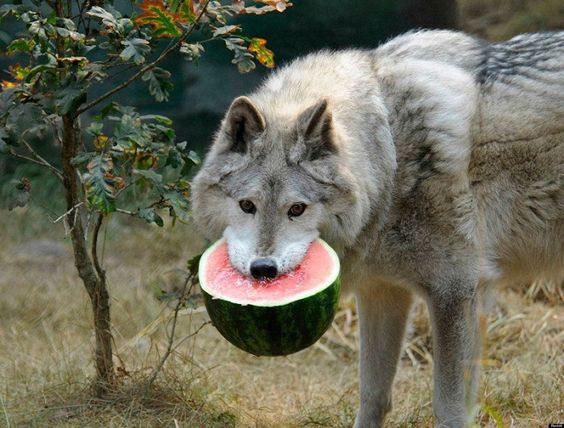If you’re a US citizen living abroad, there’s the Democrats Abroad party chair to reach out to, there are also various US territory chairs too (Puerto Rico, U.S. Virgin Islands, DC, etc.)
- 188 Posts
- 233 Comments
- usernamesAreTricky@lemmy.mltopolitics @lemmy.world•The election that will take place at the DNC to replace the chair will decide the policy direction of the Democratic party. Let your voice be heard!1·1 day ago
- usernamesAreTricky@lemmy.mltopolitics @lemmy.world•The election that will take place at the DNC to replace the chair will decide the policy direction of the Democratic party. Let your voice be heard!4·1 day ago
Reading more about DNC chair elections, the state party’s vice chair usually also votes for chair too (among others). For Texas, that’s Shay Wyrick-Cathey (shay@txdemocrats.org)
For what it’s worth it looks like his comments about trans people are what produced a large push to get the Texas Democratic party chair to step down. He said he was stepping down the day after he gave an apology
- usernamesAreTricky@lemmy.mltopolitics @lemmy.world•The election that will take place at the DNC to replace the chair will decide the policy direction of the Democratic party. Let your voice be heard!8·2 days ago
chair@cadem.org or also rusty@cadem.org seemed to be listed on various California Democratic Party documents for him
If anyone else is having any issues finding the contact emails, reply to me with a state and I can try to help you find it!
- usernamesAreTricky@lemmy.mltopolitics @lemmy.world•The election that will take place at the DNC to replace the chair will decide the policy direction of the Democratic party. Let your voice be heard!19·2 days ago
Then make sure to tell the people actually voting for the chair to give the pushback they need to see that’s a mistake. Change is only going to come when we speak up
- usernamesAreTricky@lemmy.mltopolitics @lemmy.world•The election that will take place at the DNC to replace the chair will decide the policy direction of the Democratic party. Let your voice be heard!14·2 days ago
It’s not voted on directly, you are going to want to talk to your state’s party chair to try to convince them vote on the type of chair like you would a congress person on a vote for something. In the body of the post, you can find how to find your state’s party chair
Here’s the table copied over:
State Chair | State Chair Alabama Randy Kelley | Montana Robyn Driscoll Alaska Mike Wenstrup | Nebraska Jane Kleeb American Samoa Patrick Ti’a Reid[15] | Nevada Daniele Monroe-Moreno Arizona Yolanda Bejarano | New Hampshire Raymond Buckley Arkansas Grant Tennille | New Jersey LeRoy J. Jones, Jr. California Rusty Hicks | New Mexico Jessica Velasquez Colorado Shad Murib | New York Jay Jacobs Connecticut Nancy DiNardo | North Carolina Anderson Clayton Delaware Elizabeth D. Maron | North Dakota Adam Goldwyn District of Columbia Charles Wilson | Ohio Liz Walters Florida Nikki Fried | Oklahoma Alicia Andrews Georgia Nikema Williams | Oregon Rosa Colquitt Guam Anthony Babauta[16] | Pennsylvania Sharif Street Hawaii Derek Turbin | Puerto Rico Charles Rodriguez Idaho Lauren Necochea[17] | Rhode Island Liz Beretta-Perik Illinois Elizabeth Hernandez | South Carolina Christale Spain Indiana Mike Schmuhl | South Dakota Shane Merrill Iowa Rita Hart | Tennessee Hendrell Remus Kansas Jeanna Repass | Texas Gilberto Hinojosa Kentucky Colmon Elridge | U.S. Virgin Islands Carol M. Burke[18] Louisiana Randal Gaines | Utah Diane Lewis Maine Bev Uhlenhake | Vermont David Glidden Maryland Ken Ulman | Virginia Susan Swecker Massachusetts Steve Kerrigan | Washington Shasti Conrad Michigan Lavora Barnes | West Virginia Mike Pushkin Minnesota Ken Martin | Wisconsin Ben Wikler Mississippi Cheikh Taylor | Wyoming Joe Barbuto Missouri Russ Carnahan | Democrats Abroad Martha McDevitt-Pugh
- usernamesAreTricky@lemmy.mltopolitics @lemmy.world•Rumors, conspiracy theories, and disinformation about "millions of missing votes" and voting machine fraud1·7 days ago
That’s assuming that all Trump supporters vote down ballot. I’ve been reading that a non-negligable percentage of Trump voters just voted for president and left down ballot races blank. Considering Trump only won the swing states by tiny percentages, a small percentage of Trump voters leaving blank the rest is easily enough to sway it
For instance, if we look at Wisconsin senate, we see that Tammy Baldwin has almost exactly the same number of votes as Harris (only a couple hundred more), but Eric Hovde shows less substantially votes than Trump got
Results with ~99% reported:
Donald Trump: 1,697,769
Kamala Harris: 1,668,082
(And about 40k for third party)
Vs senate
Tammy Baldwin: 1,668,545 [+436 from Harris]
Eric Hovde: 1,641,181 [-56,615 from Trump]
- usernamesAreTricky@lemmy.mlOPtopolitics @lemmy.world•Authoritarians like Trump love fear, defeatism, surrender. Do not give them what they want91·8 days ago
At the federal level, drag out everything and block everything you can. Their margins in the house, should it be called in their favor, will be extremely narrow. Let them in fight and flame against each other. Use every procedural rule to slow stuff down. Filibuster everything. Even if a specific issue is a losing fight, make them have to fight it so they cannot move on to something else. Republicans have used these tricks to block progress for a long time, time to flip it back on them
At the state level, we can much have more room to push back. A lot of what they are likely to pull is pushing things back into the states. Codify everything at state levels. Ensrhine our rights into state constitutions. A lot of federal operations rely on state government cooperating behind the scenes. Without it, a lot more can be slowed way down or made much more difficult
Outside the government, we still have power as individuals. Organize unions, protests, etc
- usernamesAreTricky@lemmy.mltoMildly Infuriating@lemmy.world•"Florida is a conservative Christian state"English28·8 days ago
Most people actually voted in favor of the florida abortion ammendment. The threshold is just unusually higher (60%) than most states. It was close to 60% but just a little shy at around 57%
With a different national environment with just a bit higher dem turnout, it probably would’ve passed
- usernamesAreTricky@lemmy.mlOPtopolitics @lemmy.world•Authoritarians like Trump love fear, defeatism, surrender. Do not give them what they want18·8 days ago
Many of groups most likely to be affected did overwhelmingly vote. For instance, queer people voted even more for Harris in 2024 than they did for Biden in 2020. They didn’t want this, and we now need to stand up for them
- usernamesAreTricky@lemmy.mlOPtopolitics @lemmy.world•Authoritarians like Trump love fear, defeatism, surrender. Do not give them what they want264·8 days ago
Grief is natural, but we cannot give up the fight. Tens of millions did not vote for this. If they want to take away rights, make every one a fight
Everything we fight is time they cannot spend moving on to the next thing. Drag every fight out even if it’s something seemingly minor. Give them no ground
The more resistance they see, the weaker they become
- usernamesAreTricky@lemmy.mltopolitics @lemmy.world•Military officials reportedly discuss how to handle illegal orders from Trump – live | US elections 2024 | The Guardian2·9 days ago
Understand that when your goal is blocking things, you somstimes do things you know will almost certainly fail. Republicans have used this playbook for ages to block the Democratic party
Make them get tied up in as many pointless tasks to distract them from their other goals. Sometimes you’ll even occasionally win a long shot challange
- usernamesAreTricky@lemmy.mltoShowerthoughts@lemmy.world•Women are already sexy, but if they turn out in historic levels to destroy Trump they will somehow become even sexier181·16 days ago
There’s a decent chance Walz runs to be president in the future if Harris wins and I think he’d probably do fairly well in a primary and general
Important: If you’re on the suspese list rather than being fully removed (unsure if that’s the case here), you might still be able to vote but will need to show proof of residence. Contact your registrar to check that and ask them about it
If voters find out they’re still on the suspended list after having shown up at their polling places on Election Day, they can still vote after they complete a “statement of residence” form.
Voters with suspended status who may have moved to other counties will be required to vote in the counties where they previously resided or may be asked to submit provisional ballots.
https://www.nbcnews.com/news/latino/texas-voter-purge-warning-ballots-abbott-rcna168811
As a note to all: Check your voter registration status today as deadlines are very fast approaching (or even already past in some states)
- usernamesAreTricky@lemmy.mltoLemmy Shitpost@lemmy.world•I like this fox news a lot better than the tv one442·1 month ago
Fox news would never be so concerned about such “details” like “hey that’s obviously not a fox, what are you on about” /s
(I uploaded the wrong photo)

- usernamesAreTricky@lemmy.mltoLemmy Shitpost@lemmy.world•I like this fox news a lot better than the tv one504·1 month ago
Fox news yet again lying through omission and blatantly forgetting the important news of foxes eating watermelons

- usernamesAreTricky@lemmy.mlto196@lemmy.blahaj.zone•The United States is a corporation.20·2 months ago
Yep, get active, get involved, and volunteer. We don’t have to just hope, we can be a part of making it happen
Whether that be for a union or a political campaign, they are won when we fight for them
- usernamesAreTricky@lemmy.mltoTechnology@lemmy.ml•X to close operations in Brazil 'effective immediately'49·3 months ago
The X service remains available to the people of Brazil, billionaire Elon Musk’s platform said on Saturday.
Wait so what do they mean by stopping operations in Brazil then? Just the offices and staff? The article isn’t super clear on it
OP’s account has no posts but three spamming this “IQ testing” site
- usernamesAreTricky@lemmy.mltopolitics @lemmy.world•Trump's plan to quell protests: 'Deport pro-Hamas radicals'0·3 months ago
-
Most of them are not pro-hamas at all and are instead against what Israel has done. Those are distinct things
-
Do you think unconstitutionally deporting US citizens based on their speech will lead to anything good? It’d almost certainly be extended to anything else as an excuse to remove other dissent on any area - not just gaza
-
Also consider running yourself too for those local down ballot races and or encouraging progressives you know to do the same!
https://runforsomething.net/
https://wherecanirun.org/